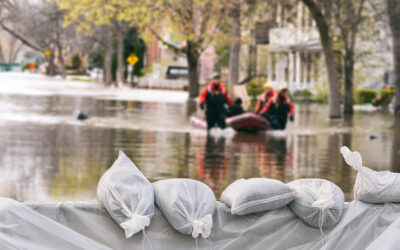The summer of 2023 is already in the record books, and it’s only at the halfway point. An unprecedented heat wave has held the Northern Hemisphere in its grip for weeks, causing a spike in heat-related injuries and fatalities in many parts of the U.S., disrupting operations for businesses that rely on employees to work outdoors, and calling into question the capacity of electrical grids in some states.
Heat Wave or the New Normal?
One question on the minds of many people is whether the past month of extreme high temperatures is a seasonal variance or the herald of a new phase in the evolution of Earth’s climate. In a recent interview on the NPR program All Things Considered, Ashley Ward, the director of the Heat Policy Innovation Hub at Duke University’s Nicholas Institute for Energy, Environment and Sustainability, commented that the term “heat wave” usually indicates a few days of extreme heat and went on to explain:
“But we’re approaching, particularly in the Southwest, you know, 27, 28 days in the triple digits and also accompanying, at times, persistently high overnight temperatures in that same region, which is really the most dangerous cocktail . . . You know, this is not a short-term event and an acute exposure of something. This is a new way of being. This is a new reality.”
Dr. Ward’s observation seems to be backed up by headlines in local and national media over the past week:
- Blistering heat spreads to U.S. Midwest as wildfire smoke lingers (The New York Times)
- Nearly 200 million people in the US are under heat or flood advisories (Chicago Tribune)
- Heat deaths in Maricopa County jump to 25 within a week; hundreds still under investigation (Arizona Republic/AZCentral.com)
- California’s epic fight to keep the lights on during extreme heat (Los Angeles Times)
- “Heat health emergency”: Nearly half the US at risk as dangerous heat expands and intensifies in the Northeast (CNN)
Impact of Extreme Heat on Businesses
When the mercury rises, every business feels the effects. While some industries may face particular challenges in extreme heat – such as construction, landscaping, and farm and ranch operations – all businesses need to be mindful of the impact on employee health and productivity, equipment, and revenue.

Above all, businesses need to recognize their role in protecting the health and welfare of their employees. Creating a detailed, written plan to help prevent heat-related illness and injury is an important step in minimizing the risk of lost productivity, costly insurance claims, and even lawsuits. And in the end – protecting the workforce is simply the right thing to do.
Here are some guidelines to help businesses create and implement an effective plan for extreme heat:
- Focus on prevention: Businesses can provide educational resources and ongoing training for employees and managers to raise awareness about the dangers of extreme heat. All team members, particularly those who work outside or in locations without air conditioning, should be regularly reminded to hydrate, take breaks, and be on the lookout for symptoms of heat-related illness.
- Practice heat acclimation: Employees that work in hot conditions should be given time to acclimate. Businesses should create acclimation schedules that permit workers to gradually increase their exposure to heat and their individual response to the physical demands of their jobs while in a hot environment.
- Provide a comfortable environment: Employees in an office setting should have access to a climate-controlled environment that encourages well-being, productivity, and safety. Team members that work outside or in hot environments should be provided with cooling stations and frequent breaks for hydration and rest from physical exertion. In addition, businesses may be subject to federal, state, or local requirements regarding working in extreme heat.
- Watch for signs of heat stress: Training for managers and employees should include information about recognizing the signs of heat illness and responding appropriately depending on the symptoms. Understanding the signs and appropriate response to signs of heat cramps, heat exhaustion, and heat stroke is critical for every business.
MiniCo has a long history of providing our agent partners and policyholders with risk management information and resources. Our experienced program underwriters and claims professionals are also available to assist in developing risk management plans for businesses including extreme heat operational guidelines. Whether your clients operate in the construction, agribusiness, landscaping, self-storage, or other industries, we are here to assist! Contact us for more information about our 19 exclusive programs.




